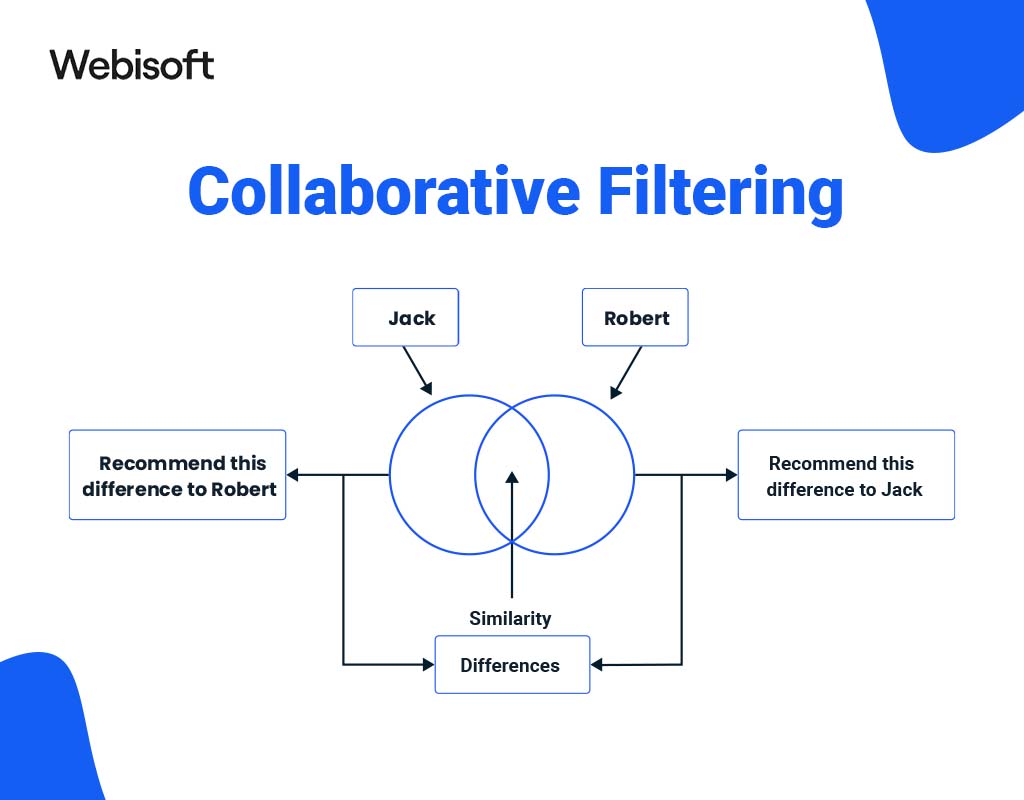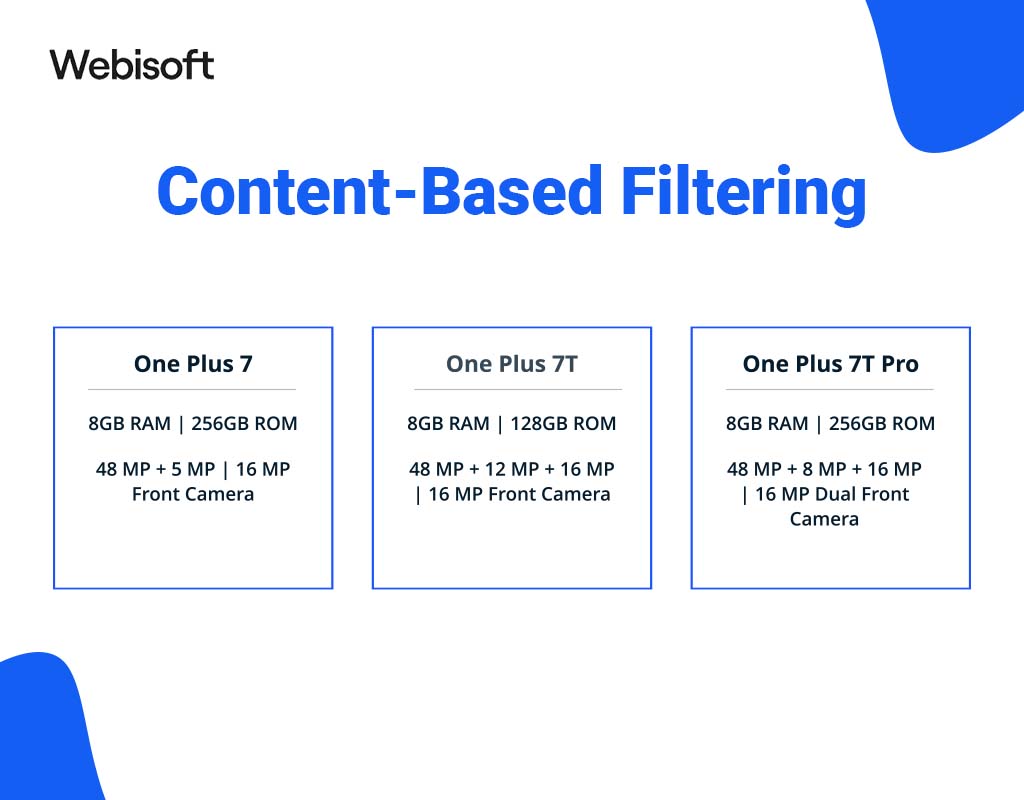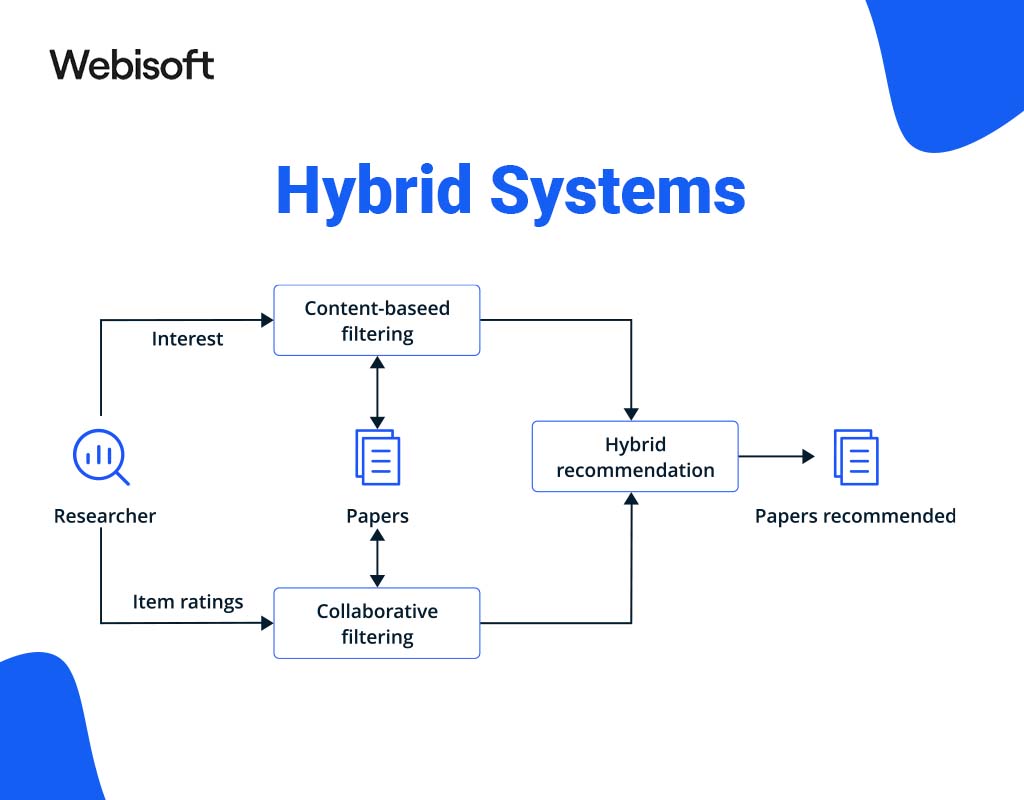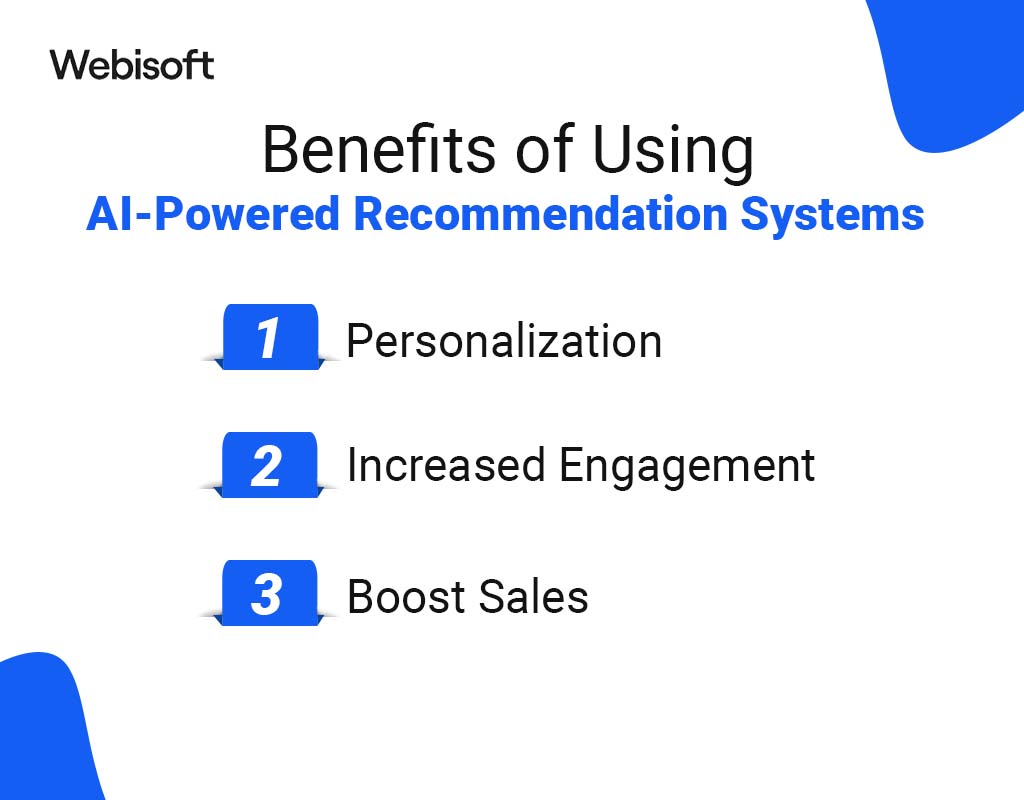

Personalization drives the digital age. Building recommendation systems tailored to individual preferences has become essential. AI has a significant role in this transformation.
Our focus here is on the construction of AI-powered recommendation systems. We’ll explore the process in detail, offering a systematic guide. A practical case study involving Python and the MovieLens dataset will also be featured.
AI’s influence is profound in the realm of recommendation systems. These systems, powered by AI, predict and suggest items that align with a user’s preferences. You encounter these systems daily.
They’re the engines behind recommendations on Netflix, Amazon, and Spotify. Building such a system requires understanding its types. Collaborative filtering is one such type.
Predictions here are based on the behaviour of similar users. If two users agree on one issue, they will likely agree. Content-based filtering is another type.
Recommendations are made by comparing the content of items and a user profile. Each item’s content is represented as descriptors, like words for documents. Hybrid systems combine both methods, offering more accurate recommendations.
AI-powered recommendation systems offer numerous benefits. Personalization is the most significant. These systems enhance user experience and satisfaction by providing personalized recommendations.
User engagement and retention are also increased by suggesting relevant content. Businesses benefit too. They can upsell and cross-sell products, boosting sales.
Understanding how these systems work is crucial. They analyze vast amounts of data, identifying patterns or similarities. Recommendation system machine learning algorithms predict user preferences and suggest items that the user might like.
AI-powered recommendation systems stand at the forefront of modern technology. They employ machine learning algorithms, predicting and suggesting items or services. Users find these suggestions tailored to their preferences.
You encounter these systems daily. They’re behind the recommendations on Netflix, Amazon, and Spotify.
Machine learning algorithms are the heart of these systems. They analyze user behaviour and preferences. Patterns and similarities are identified. Based on this analysis, predictions are made. Suggestions are then offered to the user.
These algorithms learn from past data. They improve over time, making more accurate predictions. User preferences play a crucial role. The system learns from user behaviour.
Likes, dislikes, and past behaviour are considered. The system understands the user’s taste. Recommendations are then personalized. The user finds these suggestions relevant and engaging.
Predictions and suggestions are the system’s output. The machine learning algorithm makes predictions. These predictions are based on user behaviour and preferences. Suggestions are then made.
These suggestions are items or services that the user might like. The goal is to enhance the user’s experience. AI-powered recommendation systems are everywhere. They’re integral to many platforms. Netflix uses them to recommend movies and shows.
Amazon uses them to suggest products. Spotify uses them to suggest songs and playlists. These systems enhance user experience on these platforms. They make the platforms more engaging and personalized.
These systems are sophisticated. They handle vast amounts of data. They learn and improve over time. They personalize recommendations. They enhance user experience.
They increase user engagement. They’re a testament to the power of AI. AI-powered recommendation systems are powerful tools. They leverage machine learning algorithms.
They predict and suggest items or services. They’re ubiquitous, enhancing our daily lives. Moreover, they’re behind the recommendations on platforms like Netflix, Amazon, and Spotify.
They’re sophisticated, handling vast amounts of data, learning and improving over time. They’re a testament to the power of AI.
AI-powered recommendation systems come in three primary types. Each type has a unique approach to making recommendations. They include collaborative filtering, content-based filtering, and hybrid systems.
Collaborative filtering is a popular method. Predictions are based on the behaviour of similar users. The system identifies users who share similar preferences.

If two users agree on one issue, the system assumes they’ll agree on others. For example, if Alice and Bob both liked the same book, and Alice liked another book, the system might recommend that book to Bob.
This method is effective but has its limitations. It struggles when new users or items enter the system, a problem known as a cold start.

Content-based filtering takes a different approach. Recommendations are made by comparing the content of items and a user profile. Each item’s content is represented as a set of descriptors
For a book, these descriptors could be the genre, author, or keywords from the summary. The system then matches these descriptors with those in the user’s profile.
If a user often reads mystery novels, the system recommends more. This method can handle new items well but may lack diversity in its recommendations.

Hybrid systems contain the best of both worlds. They merge collaborative and content-based filtering. This combination provides more accurate recommendations.
The system can handle new users and items while maintaining diversity in its recommendations. For example, Netflix uses a hybrid system. It considers the behaviour of similar users and the content of movies and shows
This approach allows Netflix to provide personalized and diverse recommendations. AI-powered recommendation systems come in three primary types.
Collaborative filtering makes predictions based on the behaviour of similar users. Content-based filtering recommends items by comparing the content of the items and a user profile.
Hybrid systems combine both methods for more accurate recommendations. Each type has its strengths and weaknesses. The choice depends on your particular needs and the constraints of the application.

AI-powered recommendation systems bring numerous benefits. They enhance personalization, increase engagement, and boost sales. Let’s delve into these benefits in more detail.
Personalization is a significant benefit. AI-powered recommendation systems provide personalized recommendations. They tailor suggestions to individual user preferences.
Users find these recommendations relevant and engaging. Their experience is enhanced. Their satisfaction increases.
For example, when Netflix recommends a movie you might like, it feels like the service understands your tastes. This personal touch enhances your experience and satisfaction.
Engagement is another crucial benefit. By suggesting relevant content, these systems increase user engagement. They also improve user retention. Users spend more time on the platform. They return more often.
For instance, Spotify users might discover new songs and playlists through recommendations. They engage more with the platform. They become more loyal to the service. In this way, AI-powered recommendation systems increase user engagement and retention.
Sales growth is a crucial benefit for businesses. AI-powered recommendation systems help businesses upsell and cross-sell products. They suggest products that users might like.
They recommend additional products that complement the user’s current selection. Users make additional purchases. Businesses see an increase in sales.
For example, Amazon might suggest a phone case when buying one. You’re more likely to buy the case, boosting Amazon’s sales. In this way, AI-powered recommendation systems help businesses boost sales.
In conclusion, AI-powered recommendation systems offer numerous benefits. They provide personalized recommendations, enhancing user experience and satisfaction. They increase user engagement and retention by suggesting relevant content.
They help businesses boost sales by upselling and cross-selling products. These benefits make AI-powered recommendation systems valuable in today’s digital landscape.
An AI-powered recommendation system analyses vast amounts of data and identifies patterns or similarities. It uses recommendation engine algorithms to predict user preferences and suggest items the user might like.
Understanding the workings of an AI-powered recommendation system requires a deep dive into data analysis, pattern identification, and machine learning algorithms. Let’s explore these elements in detail.
Data analysis is the first step. The system analyzes vast amounts of data. This data includes user behaviour and preferences. The system examines likes, dislikes, and past behaviour.
It understands the user’s taste. This understanding forms the basis for recommendations. For example, if a user often watches action movies on Netflix, the system notes this preference.
Pattern identification follows data analysis. The system identifies patterns or similarities in the data. It looks for commonalities among users or items. These commonalities help the system make predictions.
For instance, if two users often watch the same movies, the system identifies a pattern. It assumes these users share similar tastes.
Machine learning algorithms are the heart of the system. They predict user preferences. They suggest items that the user might like. These algorithms learn from past data.
They improve over time, making more accurate predictions. For example, if a user often watches action movies, the system will recommend more action movies.
Recommendation generation is the final step. The system uses patterns and predictions to generate recommendations. These recommendations are personalized.
They align with the user’s preferences. The user finds these recommendations relevant and engaging. For instance, Netflix might recommend an action movie the user still needs to watch.
In conclusion, an AI-powered recommendation system analyses data, identifies patterns, and uses machine learning algorithms. It predicts user preferences.
It suggests items that the user might like. This process enhances user experience. It increases user engagement. It boosts sales for businesses. It’s a testament to the power of AI.
Building an AI-powered recommendation system involves several steps. We’ll explore these steps using a case study in Python with the MovieLens dataset.
Building an AI-powered recommendation system involves several steps. Data collection, preprocessing, modelling, training, evaluation, and deployment are the steps. Each step is crucial. Each step requires careful consideration.
With the right approach, you can build a recommendation system that enhances user experience and drives business growth. This case study in Python with the MovieLens dataset is a practical example of how to do it.
Data collection is the first step. For our case study, we’ll use the MovieLens dataset. This dataset contains movie ratings from users. It provides a rich source of data for our recommendation system.
The more data we have, the better our system can learn and make accurate recommendations.
Preprocessing follows data collection. The data needs to be cleaned and transformed. We’ll convert it into a format suitable for the machine learning algorithm.
This step might involve removing outliers, handling missing values, and encoding categorical variables. Proper preprocessing ensures that our machine-learning algorithm can effectively learn from the data.
Modelling is the next step. We’ll use a machine learning algorithm to build the recommendation system. For our case study, we’ll use collaborative filtering.
This algorithm makes predictions based on the behaviour of similar users. It assumes that if two users agree on one issue, they will likely agree on others. This approach allows us to make personalized recommendations.
The training follows modelling. The model is trained on the dataset. It learns from the user ratings in the MovieLens dataset. It identifies patterns and similarities among users.
It learns to predict user preferences. The more it learns, the better it can make accurate recommendations.
Evaluation is a crucial step. The model’s performance is evaluated using suitable metrics. These metrics include precision, recall, and F1 score. They tell us how well our model is doing.
If the model’s performance is unsatisfactory, we might need to revisit the preprocessing or modelling steps.
Deployment is the final step. Once satisfied with the model’s performance, it is deployed. It starts by providing recommendations.
Users can now benefit from personalized recommendations. Businesses can see increased user engagement and sales.
Machine learning is at the heart of an AI-powered recommendation system. It uses algorithms to analyze user behaviour and preferences, identify patterns and similarities, and predict what the user might like.
The system then uses these predictions to suggest items or services to the user. The more data the system has to learn from, the more accurate its predictions and recommendations can be.
AI-powered recommendation systems offer numerous benefits:
Building an AI-powered recommendation system is a complex but rewarding task. It enhances user experience and drives business growth by boosting sales and increasing user engagement.
With the right tools and approach, you can build a recommendation system that stands out in today’s competitive digital landscape